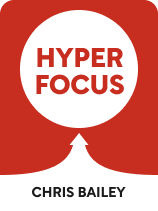

This article is an excerpt from the Shortform book guide to "Hyperfocus" by Chris Bailey. Shortform has the world's best summaries and analyses of books you should be reading.
Like this article? Sign up for a free trial here .
What is the Zeigarnik effect? How can you leverage it to be more creative?
Creative insights might seem random, but you actually can deliberately spark them by leveraging a peculiar neural phenomenon called the Zeigarnik effect. It’s when your brain continues to work on unsolved problems—even when you don’t realize it.
Here are four ways to unleash your creativity using the Zeigarnik effect.
Creativity and the Zeigarnik Effect
By improving the quality of the information you consume, you’re able to have higher-quality ideas. But how do you actually have those ideas? Most people assume that creative insights happen randomly. However, Bailey explains that you can intentionally trigger creative insights thanks to what psychologists call the Zeigarnik effect.
The Zeigarnik effect is the name for a peculiar neural phenomenon: We remember things we haven’t yet completed much better than things we’ve completed. Thanks to the Zeigarnik effect, your brain continues to work on problems you haven’t yet solved—even if you’re not actively working on them.
(Shortform note: One paper notes that, despite the Zeigarnik effect’s popularity in productivity books, most modern psychology books don’t mention it because researchers haven’t been able to replicate it reliably. Studies that support the Zeigarnik effect suggest that it relates to motivation: People motivated by feeling successful remember incomplete tasks better because they need to complete them to achieve their goal. However, the Zeigarnik effect is not a universal phenomenon.)
As you’re subconsciously working on this problem, your brain encounters various stimuli. It automatically tries to connect all of these stimuli to this problem. These stimuli might be external (like the apple that fell on Isaac Newton’s head). If your mind is wandering, these stimuli might be internal—like an old memory you haven’t thought of in a while. (Shortform note: A falling apple definitely triggered Newton’s theory of gravity—but there’s no evidence to suggest it fell specifically on his head.) Sometimes, the stimulus your brain encounters reminds it of something else it already knows. It connects this old information (or the new stimulus, which may itself be the information you were missing) to your problem—and solves it.
When your mind wanders, you encounter many more stimuli because you think about many more things. The more stimuli you encounter, the higher the likelihood you encounter the stimulus you need to solve your problem, so the more likely it is you’ll gain a creative insight.
If you mind-wander intentionally, you’re far more likely to notice and remember this creative insight. Furthermore, when you perform a fun, easy task as you mind-wander, you maximize the stimuli you encounter: You experience both external stimuli (from doing the task) and internal stimuli (the thoughts you have as your mind wanders). Therefore, intentionally mind-wandering in the right situations can increase your likelihood of having and remembering a creative insight.
4 Strategies for Triggering Creative Insights
Design such situations yourself using Bailey’s strategies.
#1: Intentionally Mind-Wander in Busy Environments
As we’ve seen, you need new stimuli to trigger a creative insight. So maximize your chances of having a burst of inspiration by maximizing the external stimuli you encounter. Bailey recommends intentionally mind-wandering someplace you’ll regularly encounter new cues—like a train station or a busy café.
(Shortform note: “Where’s the Spark? How Lockdown Caused a Creativity Crisis” describes how COVID-19 caused a loss in creativity partly because people weren’t exposed to new experiences. If your company still works from home, expanding your weak-tie network through cross-departmental collaborative projects might be a good way to increase new stimuli: Chance comments from “weak ties” can be the source of unexpected inspiration.)
#2: Manipulate the Zeigarnik Effect
Bailey explains that there are two main ways you can manipulate the Zeigarnik effect.
- If you’re stuck on a specific problem write it down.
- Stop your task in the middle.
Both methods ensure that your problem or task remains in the back of your mind. Writing down your problem helps you remember the problem. (Shortform note: Bailey doesn’t offer evidence to support this claim. Many studies indicate that handwriting improves your memory, but typing doesn’t have the same effect—so Bailey’s strategy may only work if you handwrite your problem.) And stopping your task in the middle works because the task leaves behind mental residue, so your mind continues to work on it even if you’re not actively doing the task. (Shortform note: Stopping your task in the middle likely works best if you’re able to let your mind wander for a while. As you may recall from our discussion of hyperfocus, if you still have mental residue from a task in your working memory when you need to hyperfocus, the mental residue will distract you and you won’t be able to hyperfocus as well.)

———End of Preview———
Like what you just read? Read the rest of the world's best book summary and analysis of Chris Bailey's "Hyperfocus" at Shortform .
Here's what you'll find in our full Hyperfocus summary :
- Why it's just as important to learn how to manage your attention, along with your time
- Why you still feel tired no matter how many breaks you take
- Strategies for managing your attention for better productivity and creativity






